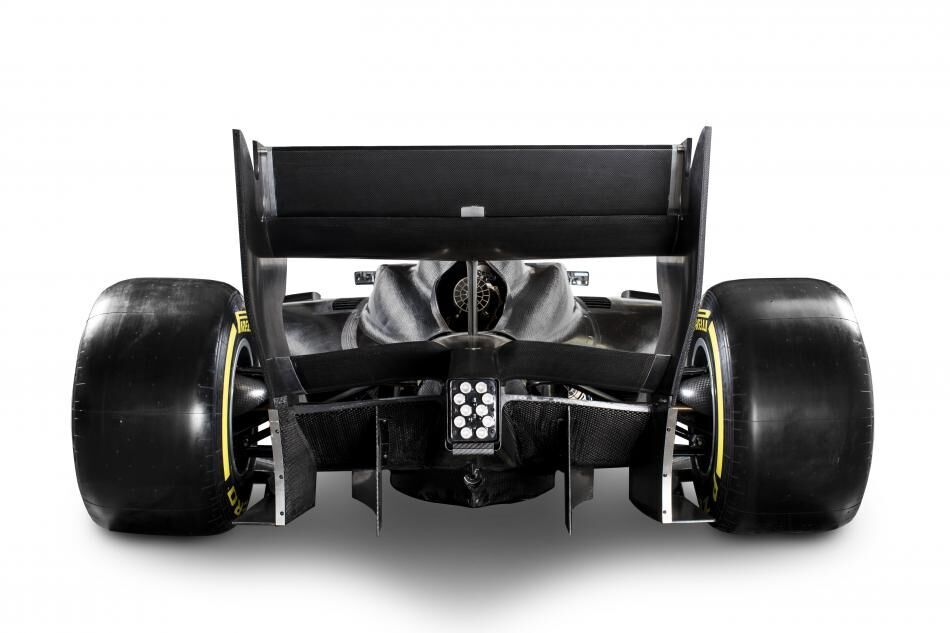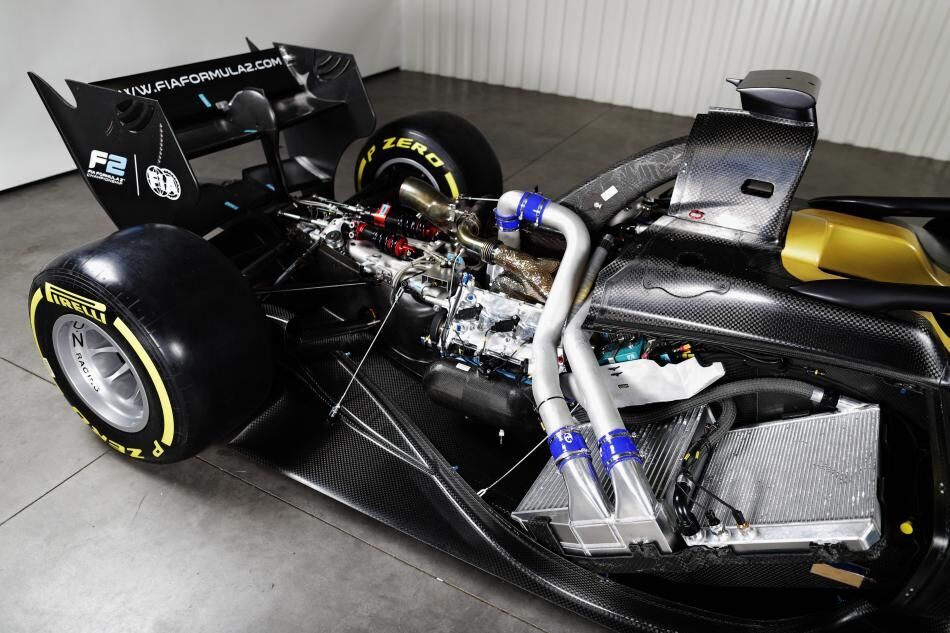Shaped underfloors were banned. They only thought they were banning 'ground effect', because that's exactly what the diffuser does. In fact I bet the loads generated by the diffusers have exceeded those obtained in the so-called 'ground effect' era.
Yes, and that is because the bargeboards via controlled vortices are used to enhance the aerodynamic effects of the flat floor, to make it;s performance surprass that (potentially) of a tunnel.
We've already discussed the Deltawing idea (sending a big counter rotating vortex pair through under the car, to energise the ground effects) in the most beautiful Indycar thread, and I made a Flat floor + diffuser VS inverted wings thread here http://forums.autosp...ffects-is-best/
For reference, a Formula 2 car still uses something more similiar to a simple Venturi tunnel rather than a flat floor energized by vortices with lots of rake..

Formula 2 diffuser: venturi tunnel like

Formula 2, you can see the F2 venturi/diffuser starts well ahead of rear axle, unlike F1
Why make the flat floor as large as possible? Simply it's the surface over which the low pressure (vacuum) underneath the car acts. Bigger floor = more downforce (if a consistent low pressure can be created under the floor via the aerodynamic sealing using vortices generated by the barge-boards and so on).

Formula 1 underbody, pressure coefficient from racecar engineering magazine
Fancy underbody vortex structure (CART as an example)
William Toet discusses interesting upper body f1 aero considerations here too (basically push the wake of the fron t wheels outboard of the car, and minimise the air which is impinging on the rear wheels too) https://www.linkedin...art-willem-toet
Edited by V8 Fireworks, 23 February 2018 - 16:25.




























